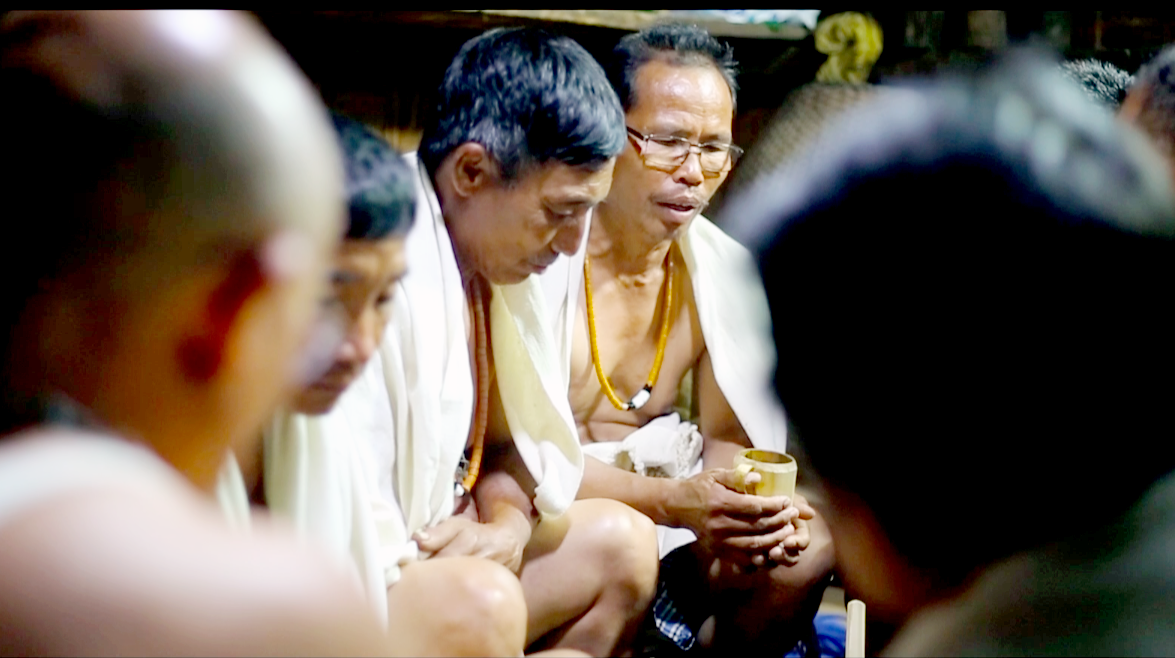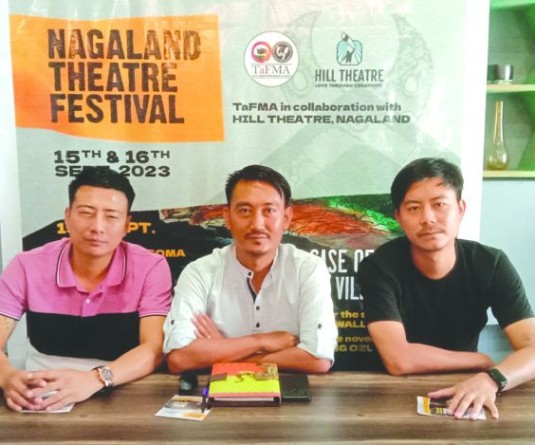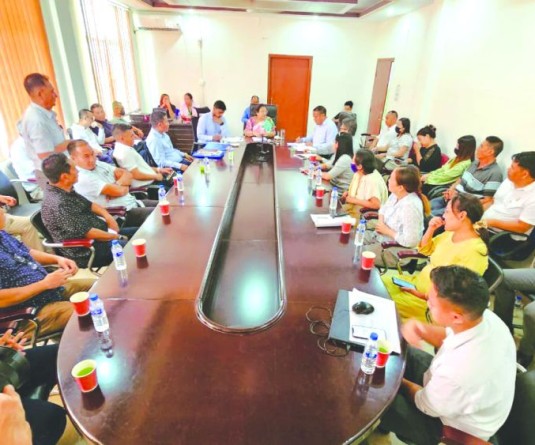They are calling the rain

A group of farmers called Alojimi in Sümi language singing along to agrarian songs in Chishilimi village, Pughoboto sub-division i n Zunheboto district of Nagaland. (Photo Courtesy: Betoka Swu)
With indigenous lore and techniques being drowned out by modernity,
Hiyo Team documents traditional farming techniques at Chishilimi Village
Kanili Kiho
Dimapur | September 22
Agriculture is intrinsic to the Naga way of life. It is more than an act of sustenance; it is deeply rooted in the cultural and historical identity of Naga communities.
However over the years, traditional farming along with the tales and rituals associated with it face the danger of being forgotten.
To help preserve these customs and in the process help farmers, a group of young professionals under the banner of Hiyo Team have documented ten agrarian songs associated with farming techniques at Chishilimi Village. The village lies among the lush hills and vales under Pughoboto sub-division of Zunheboto district.
The team, who initially pitched the idea to the farmers and subsequently hired by the latter, visited the village in August and started documenting these songs. They plan on releasing videos of farmer groups in the village engaged in traditional farming techniques in the first week of October. They also taught the farmers to document their practices on their own for the future.
As part of the project, the Hiyo Team documented groups of young farmers numbering 15 to 20 (called Alojimi in Sümi language) engaged in these techniques which are all accompanied by songs.
They assemble face to face and hit the ground with wooden pestles singing along – Dala Dala, bringing back the melodious echoes of their forefathers.
They are calling the rain.
The ten documented songs include Hangole, Liphile, Thighale, Thishele, Aphilo Kuwo, Lejole, Tixi – Ohole, Mutsutushole, Ahepapule and Dala Dala.
Chishilimi Village still practices these age-old techniques passed down orally through generations.
Betoka Swu, photographer and activist, who is the founder of Hiyo Team, said that with the disappearing tales of the indigenous Nagas, the need to document the traditional acts became compelling and vital.
Xukishe, a member of the group of farmers said the village has four types of Alojimi – Akhemi Loji (Loji means group), Apumi Loji, Loji Kichemi and Ahemi Loji.
While the first three have been carried through the ages of forefathers, Ahemi Loji was introduced by a younger generation, 20 years ago. In Ahemi Loji, the farmers decided to form a group where ‘everyone is equal.’
The groups hold different characteristics. For instance, Akhemi Loji means a group of peers, while Apumi Loji implies a group of young people alone.
Each group has an Aloji Papu (Father of the group), Xukishe said, adding, during festivals, the head/s of animals for consumption is presented to the Aloji Papu. At present, he is the Ahemi Loji’s Papu.
Describing the village as a land of abundance, Xukishe says it has a favorable climate with fresh water and every crop grown produces aplenty.
Swu meanwhile added that farming among the indigenous people is a sign of resistance. “It is dear to the people, for survival.” He further noted that the preservation of traditional forms of farming knowledge and practices can help sustain biodiversity, and enhance food security.
He however noted that with agriculture being their sole source of income, the financial constraints faced by farmers today is a matter of concern.
Hiyo Team plans to market the indigenous music to culture based organizations or the media, with the profits to be used for recording data on seeds, on tools used for farming and for others to share traditional farming knowledge.
The Nagas, while rich in tradition has limited to no indigenous music recorded/preserved, to call one’s own, Swu said.
Through the documentation of music and video footages, the Hiyo Team has pitched the idea to certain foundations for help, with positive responses from certain quarters. He however clarified: “We are not selling our story though.”
The Hiyo Team consists of photographer and activist, Betoka Swu; video editor, Roko Dikha; videographer, Inito Murru; and photographer, Pinoka Swu.





